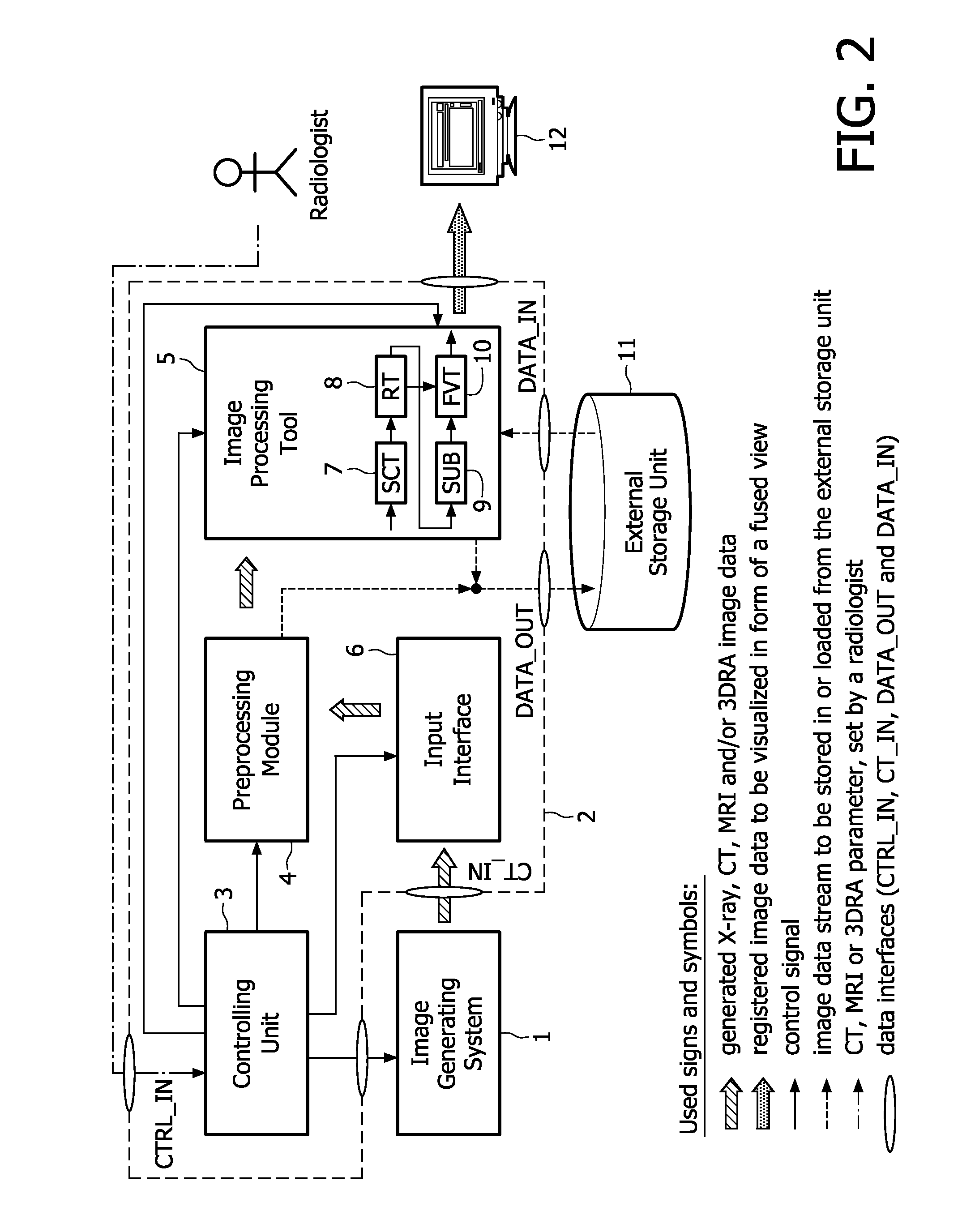Detection and tracking of interventional tools
a tracking and interventional technology, applied in the field of minimally invasive xray guided interventions, can solve the problems of difficult subtraction with reference images and inability to always provide reference images, and achieve the effects of enhancing the contrast of those patterns, reducing the contrast of common patterns, and improving visibility
- Summary
- Abstract
- Description
- Claims
- Application Information
AI Technical Summary
Benefits of technology
Problems solved by technology
Method used
Image
Examples
Embodiment Construction
[0029]In the following, the aforementioned image processing method and system will be explained in more detail with respect to special refinements and referring to the accompanying drawings.
[0030]As shown in the flowchart depicted in FIG. 1, it is proposed to use a preoperatively acquired 3D voxel data showing an anatomical structure or a pathological tissue region in the interior of a patient's body, which has e.g. been recorded (S1) with a 3D imaging device, such as e.g. a CT, MRI or rotational angiography device, etc., and register (S4) this voxel volume with acquired 2D data of intraoperatively recorded (S3) fluoroscopic X-ray images. This may be done in such a way that a digitally reconstructed radiograph (DRR), that may have been generated (S2) from the 3D voxel data by means of a ray cast algorithm which comprises the step of transforming a voxel volume into a 2D image through central projection, matches the 2D fluoroscopic images as closely as possible. To be more precisely,...
PUM
 Login to View More
Login to View More Abstract
Description
Claims
Application Information
 Login to View More
Login to View More - R&D
- Intellectual Property
- Life Sciences
- Materials
- Tech Scout
- Unparalleled Data Quality
- Higher Quality Content
- 60% Fewer Hallucinations
Browse by: Latest US Patents, China's latest patents, Technical Efficacy Thesaurus, Application Domain, Technology Topic, Popular Technical Reports.
© 2025 PatSnap. All rights reserved.Legal|Privacy policy|Modern Slavery Act Transparency Statement|Sitemap|About US| Contact US: help@patsnap.com



